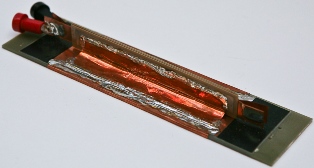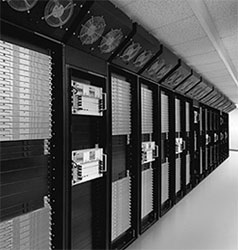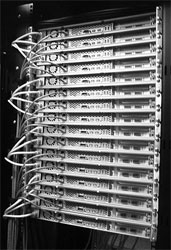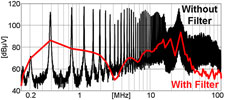RESEARCH
Electromagnetic Noise Containment with Integrated Planar Power Connection

The current practice for reducing system interference is generally to add a filter to each converter, which is clearly a local, expensive, and inefficient solution. CPES has now demonstrated a major breakthrough in electromagnetic noise containment by pioneering the concept of integrated bus filters, based on transmission line principles. The new filter is implemented as a simple, planar, low-cost, metal-ceramic sandwich structure that connects the outside power terminals with the converter inside the box. Classical filters cannot attenuate properly the noise at radio frequencies due to natural parasitic interactions with the components. The integrated planar power connection structure utilizes these normally harmful parasitic interactions to enhance the attenuation. Additionally, the attenuation at lower frequencies can be further improved by creatively utilizing interactions between the connection structure and the input power line. If further enhanced, this technology can eliminate the need for additional electromagnetic noise filters, resulting in drastically improved power density and simplified manufacturability of electronic power converters.


























































































